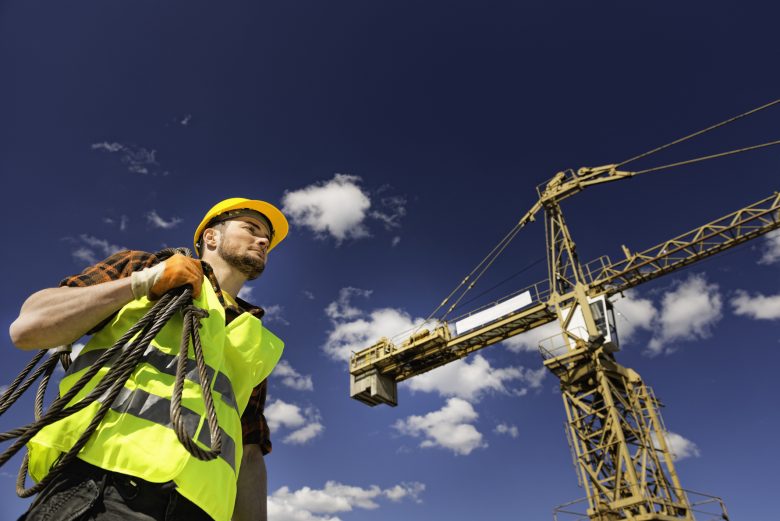Cranes demand caution whether they are used in harbors, on construction sites or in other work zones. From crane setup to operation and dismantling, it’s vital for everyone to follow crane safety procedures and standards because a small oversight or mistake can have catastrophic consequences. And in every jurisdiction, there are a few key processes that cannot be ignored or avoided when addressing crane safety.
Inspections
To ensure that cranes are in safe operating condition, a variety of inspections are required. Post-assembly or adjusted equipment inspection must be performed by a “qualified person”, and shift and monthly inspection by a “competent person”.
The first inspection on the list for tower cranes should be a pre-erection inspection. This allows an inspector to identify crane components that have been damaged during transport and prevent them from being used. A variety of other inspections are also required, including:
- shift, monthly, and annual inspections for all equipment and wire rope;
- post-assembly inspections;
- inspections of modified or repaired/adjusted equipment; and
- four-year inspections of the internal vessel/flotation device for floating cranes/derricks.
Inspections allow safety professionals to keep on top of any changes in the equipment, note damages and plan for future problems. They are the best way to ensure that faulty parts aren’t used and that cranes are in good working order.
Safety managers and supervisors should also be aware of how an inspection could add time pressures and stress for workers waiting to complete the next phase of assembly/disassembly. If workers are waiting for the inspection to be completed, this would be an ideal time for a toolbox talk about next steps and how rushing and frustration can sometimes compromise proper procedures in order to get the job done. Setting a reasonable expectation and a reminder that completing the task safely is more important than completing it on time—especially with this much at stake—might be enough to avoid catastrophe when they’re given the green light to proceed.
Assembly/disassembly
There are two options when assembling or disassembling a crane: the manufacturer’s procedures or the employer’s procedures. Whichever procedures are chosen, certain general OSHA requirements need to be followed:
- The procedures must follow manufacturer’s prohibitions.
- The A/D Director has to be a “competent and qualified person” (or a “competent person” assisted by a “qualified person”) who understands and reviews procedures, and checks that crew members understand their tasks and the workplace hazards.
- A qualified rigger must perform rigging operations during assembly/disassembly and during other activities that require workers to be in the fall zone to handle a load.
- When using outriggers, they must be fully extended or deployed as per the load chart.
Successful assembly and disassembly rely heavily on hazard assessment, which must be performed regularly and according to procedures to ensure the right conditions (including environment, weather and ground conditions) for the work to proceed. Though not a requirement, assessing the human factors affecting those involved is also a smart idea. Is the crew experienced? Have they worked together before or for a long time? Are there signs of complacency? Just like unsafe conditions, unsafe behaviors should sound the alarm to stop work and re-assess all hazards.
Documentation
There are many recordkeeping obligations in crane safety, with a variety of processes requiring documentation:
- monthly and annual inspection reports;
- tower crane foundation/support design;
- the need for repairs or adjustments to the equipment;
- modifications; and
- employer-developed procedures
Although many people wince at the mention of paperwork, keeping a tab on all the processes can be made easier—and more transparent in the event of an inspection—by documenting them. It may also help to improve processes, find mistakes, and investigate a serious incident if one occurs. Looking at it from this angle may make it feel less onerous to keep on top of the many record requirements.
Training
Workers must be trained to recognize and avoid hazards in their workplace. And employers must pay for the certification or qualification of uncertified or unqualified employees who work with cranes. Crane certification is a serious issue that can affect people’s safety because the operators are much more likely to cause a serious incident if they lack proper training. Crane operators’ testing covers crucial subjects such as preventing power line contact and calculating crane lifting capacity, which always have to be done correctly.
But there are many more people at the worksite and all workers, regardless of their roles—from the A/D Director to the signal person or a rigger—must be clear on their responsibilities and fully trained on applicable safety measures. This is important to proper crane operations and the safety of everyone in the area. The employer must also ensure that the employees understand the training, which should be provided in a manner (and language) they are comfortable with.
Additionally, it’s worth including human factors in the safety training. It will complement compliance training by introducing ways to address states of mind such as rushing or fatigue before they affect workers’ safety as they assemble or disassemble the cranes or perform rigging operations, for example.
Although there is a lot to remember about crane safety (and it can hardly all be covered here), thorough and comprehensive training can be of great help where other processes fall short. Whether it’s a construction industry worksite or a harbor, well-trained workers with a safety-first approach can help ensure that crane inspections and assembly and disassembly are done correctly and safely. They will be more likely to notice any problems or safety concerns. They will also be more willing to follow regulations and, with the help of human factors training, avoid making significant errors related to their state of mind.

